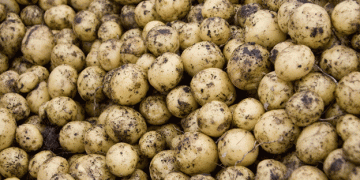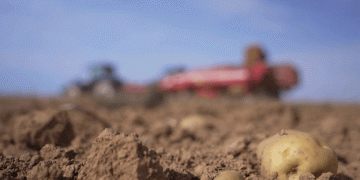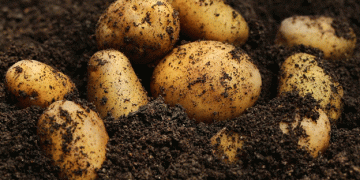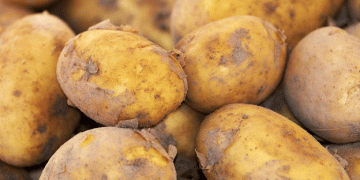Sweden’s potato farmers are facing a bleak outlook for the 2023 harvest, as the country grapples with an ongoing drought and severe water shortages. Local farmers, such as August Henrysson in Hult, near Eksjö, are sounding the alarm, emphasizing the urgency of rainfall to salvage the crop. With no significant rain in sight, Swedish farmers are increasingly worried about the potential for a local potato shortage, which could lead to higher prices for consumers.
Drought Conditions Across Sweden
The widespread drought affecting Sweden is part of a larger pattern seen across Europe, where countries are grappling with extreme heat and water scarcity. According to the World Wildlife Fund (WWF), Sweden is not immune to these conditions, particularly in the eastern regions of the country, including Mälardalen and Blekinge. In these areas, water levels are already comparable to the extreme summer of 2018, which severely impacted agriculture.
The lack of rainfall in these key agricultural regions is having a direct effect on potato farming. The shortage of water is exacerbating the problem, as farmers rely on irrigation systems to maintain healthy crops. Without sufficient rain, the potato plants are stressed, leading to concerns over both yield and quality.
Impact on Potato Production and Prices
The effects of this drought could be far-reaching. If the weather conditions do not improve, Sweden may face a significant potato shortage in the fall of 2023. This would not only reduce the supply of locally grown potatoes but also lead to an increase in prices. As August Henrysson points out, the basic principle of supply and demand means that when the harvest is scarce, prices will inevitably rise. Consumers will bear the brunt of these price hikes, with Swedish potatoes likely to become a more expensive commodity.
The Swedish Potato Growers Association has also highlighted the risk of reduced harvests, with some regions already seeing a decline in the acreage of potatoes planted due to the challenging conditions. This situation is further complicated by the ongoing water crisis, which may affect other agricultural sectors as well, including cereals and vegetables.
Wider Economic Implications
The ongoing drought is not just a concern for farmers but also for Swedish consumers and businesses. As the country’s potato harvest faces setbacks, prices for potatoes and potato-based products are expected to increase. Furthermore, the impact of the drought may extend beyond Sweden, with other European countries also experiencing water shortages and high temperatures, which could disrupt food supplies across the continent.
Swedish companies that rely on agricultural production, both locally and abroad, may face higher operational costs due to the increased prices of raw materials. Farmers in drought-affected areas will need support from the government and agricultural organizations to mitigate the financial impact and find solutions to the water scarcity challenges.
Agriculture in Crisis: A Call for Solutions
The Swedish Board of Agriculture has acknowledged the challenges posed by the ongoing drought, emphasizing the potential long-term effects on farming in the country, especially in the southern regions. The government is actively working to provide assistance to farmers impacted by the water shortages, exploring solutions such as irrigation systems and drought-resistant crop varieties. However, immediate action is needed to prevent further damage to Sweden’s potato industry and broader agricultural sector.
The crisis is a stark reminder of the growing importance of sustainable water management and climate resilience in agriculture. As extreme weather events become more frequent and severe, farmers, scientists, and policymakers must work together to develop strategies that can protect food production and ensure the stability of food prices.
The drought in Sweden poses a serious threat to the 2023 potato harvest, with farmers and consumers alike facing potential shortages and rising prices. While the situation remains uncertain, it underscores the need for sustainable agricultural practices, efficient water management, and greater climate adaptation strategies. As the country grapples with these challenges, the agricultural sector will need continued support to navigate the evolving landscape of climate change.






